TURNING POINTS
A decade since the Marikana massacre, a century since the Rand Revolt
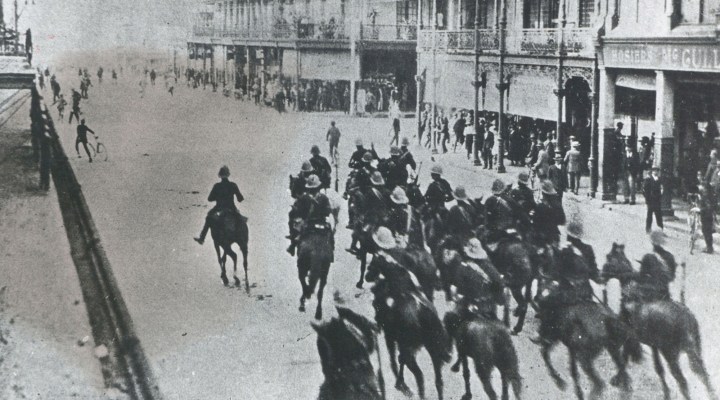
I was preparing a Marikana anniversary event at the University of Johannesburg when I had one of those moments when you say to yourself: ‘Why didn’t I think of that before?’
The year 2022 marks the 10th anniversary of the Marikana massacre and also the centenary of the Rand Revolt. The former was a turning point, but the latter was at least as significant historically and even more people were killed. Yet, very little has been said about the centenary, and this got me thinking…
- Marikana Anniversary event: “Marikana Massacre: Respect and Retrospect”
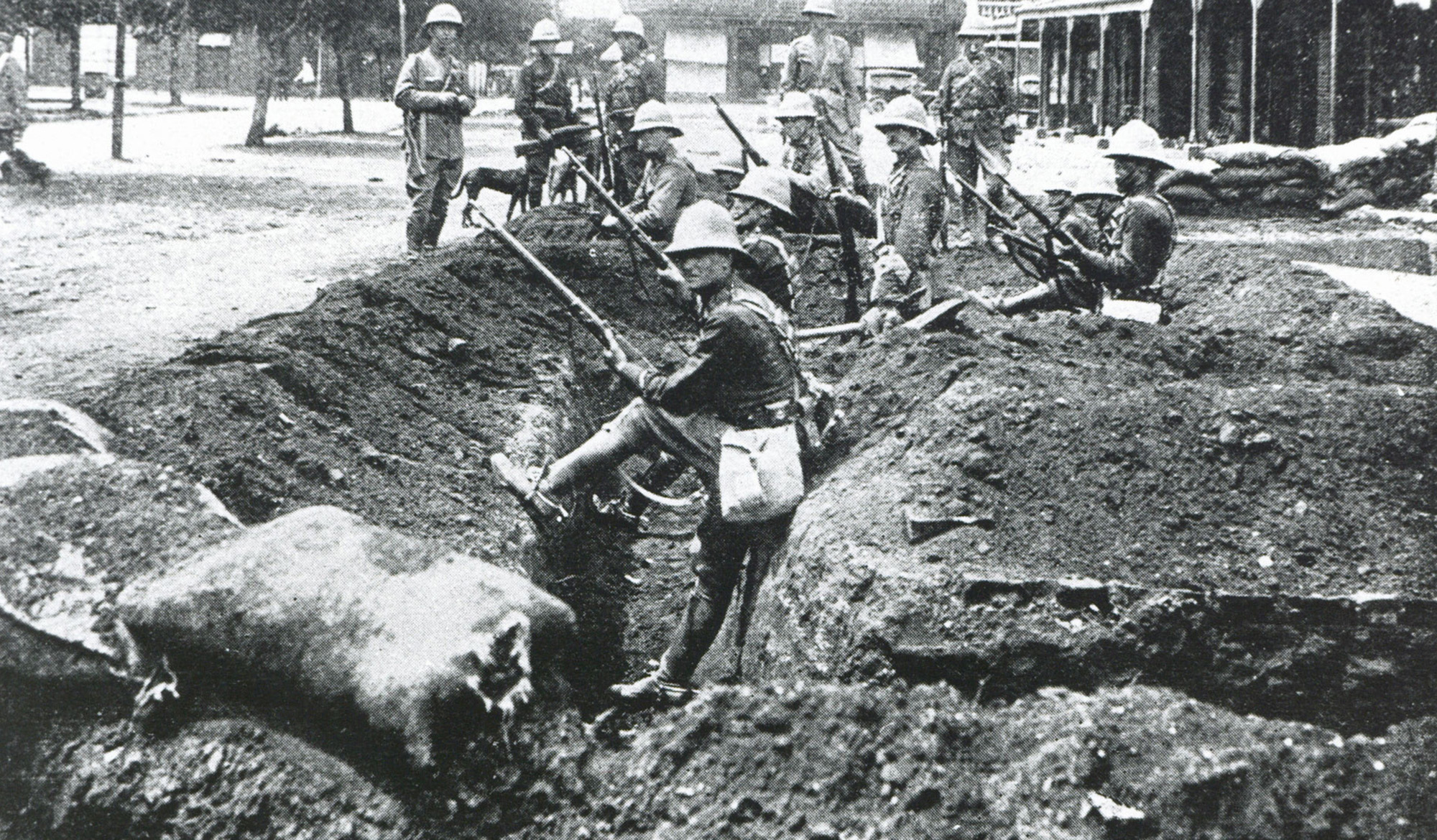
Circa 1922: In Fordsburg, the Rand Revolt was nothing short of trench warfare. (Photo: Historical Papers Research Archive, University of the Witwatersrand, South Africa)
I had heard about Brixton Ridge. It was probably the most important battle during the Rand Revolt. There, on 10 March 1922, some 1,500 strikers defeated less than 200 police to take control of this strategic summit. Then, two days later, government forces retaliated, bombarding the white workers from the air and with heavy artillery, before following up with ground forces that included civilians as well as the army. The strikers were no match for this onslaught. Having regained control, the government used the high ground to good advantage, firing down on Fordsburg, where the strikers’ headquarters were located.
But where is Brixton Ridge? I happen to live in Brixton, on its ridge moreover, and I just assumed the battle site had been covered over with houses and churches. I got it wrong. The bit of the ridge in question is actually in Vrededorp, east of Brixton, much closer to Fordsburg.
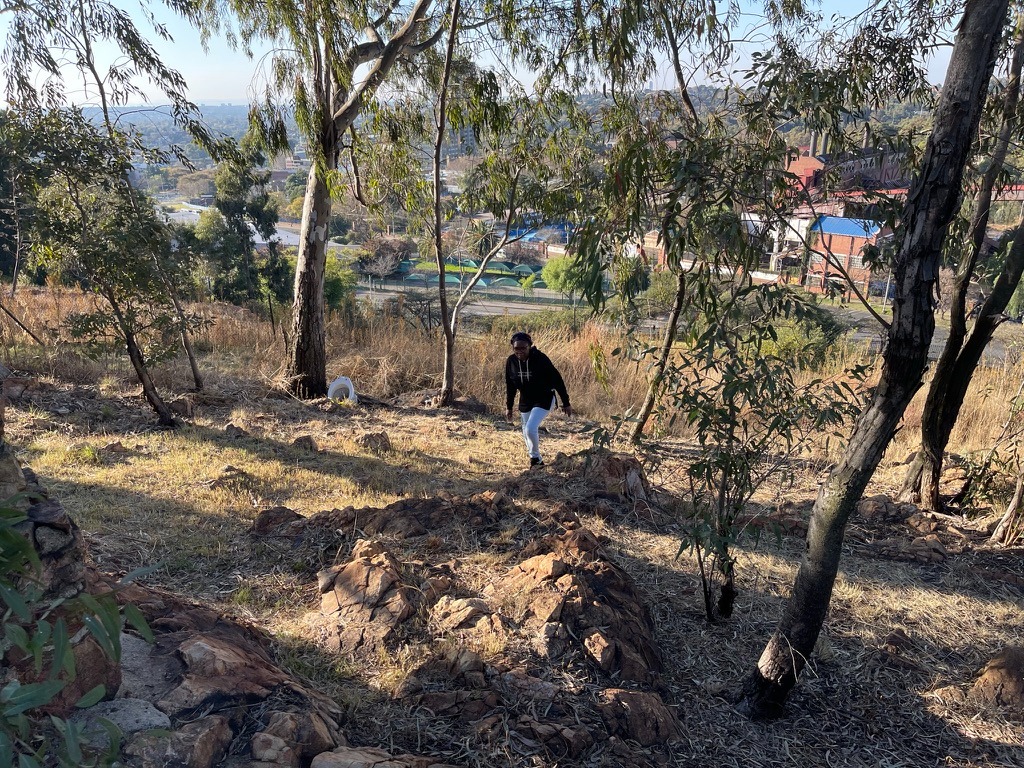
Brixton Ridge, site of the most famous battle in the 1922 Rand Revolt. Further down is the Bunting Road Campus of the University of Johannesburg. The Koppie is on Google Maps. It’s on open ground and simple to access. (Photo: Supplied)
So, with the Marikana anniversary coming up, I decided to look for where the battle took place. It was not difficult to find. Vrededorp Koppie is on Google Maps. It’s on open ground and simple to access. Next to it is New Nation School, which, it turns out, was once Cottesloe School, often mentioned in books. If you talk nicely to the security guard, he might let you see the blue plaque at the entrance to the building. It’s surrounded by pockmarks allegedly caused by bullets fired in the battle.
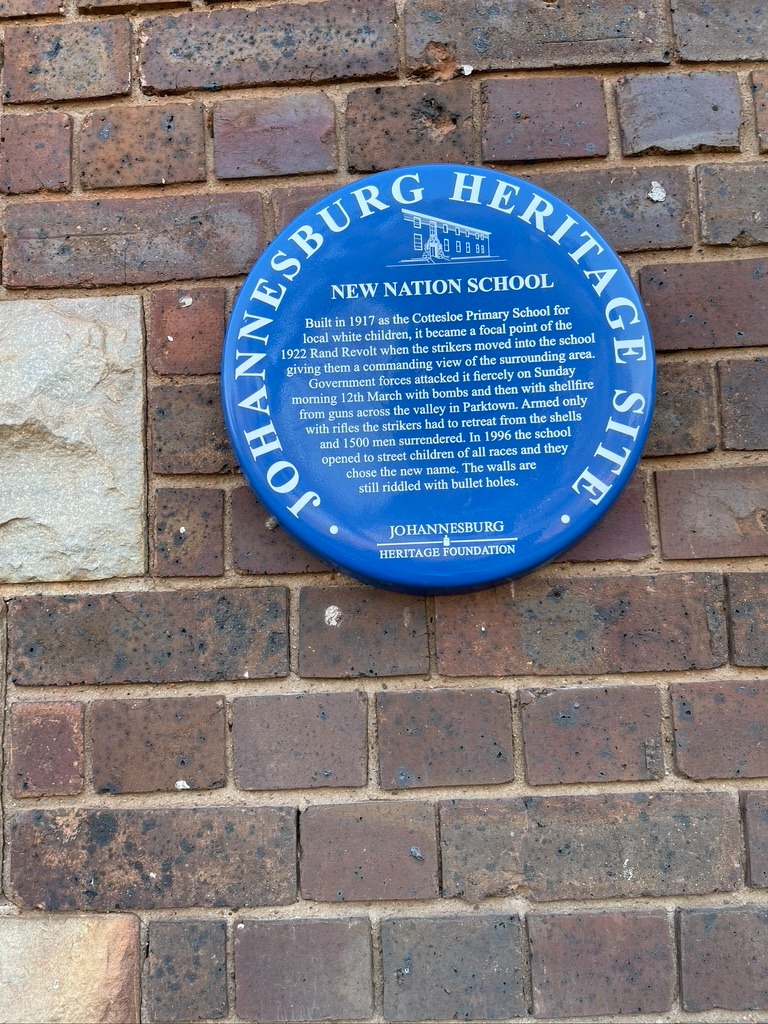
Heritage plaque at the Cottelsoe School, now New Nation School, where workers held out against the onslaught or military bombardment in 1922. (Photo: Supplied)
The boundary fence beside the koppie and the school was one I recognised. It is a University of Johannesburg (UJ) fence, part of the Bunting Road campus. So, today’s UJ actually reaches the ridge, which provides a natural boundary. Then, I realised that the fence and the school are what I see when I walk up from my office located in the quaintly named Research Village. Ouch! It’s not only that I, a labour historian, had failed to work out where the battle occurred and that part of the site was on my campus, but, worse, mine was the closest office to where the deaths occurred.
Moreover, when I looked at old maps, it was clear that many of the government forces were stationed on what is now the campus. The Special Police were located where the School of Tourism and Hospitality now stands. Our anniversary event “Respect and Retrospect” takes place in the school’s conference rooms. Anybody who cares to do so can come back in time with me, and motor up to the koppie from the school at 4.30pm on 15 August.
Apartheid’s spatial divides
Now, what’s the significance of all this? First, it highlights the way the ridge marks yet another of apartheid’s spatial divides. To the north is Auckland Park, a plush white suburb, which these days includes the Bunting Road campus. To the south is a collection of small, unfashionable districts that housed poor whites, with some “coloureds” and Indians and perhaps a few Africans holding on even in the worst days of apartheid. These are the suburbs of Jan Hofmeyer, Vrededorp and Pageview. I spoke with an old lady who has lived in Vrededorp for more than 40 years but has never been on the campus; and very few students or staff travel the other way, to the unknown parts on the other side of a single pedestrian gate.
Visit Daily Maverick’s home page for more news, analysis and investigations
The story of Brixton Ridge and the Rand Revolt has implications for our understanding of the Marikana massacre. As in 2012, the workers were perched on a koppie, from where they could see their enemy, but which became an enclosure with little room for escape. At Vrededorp there is a wide vista of the City of Gold, with its old mining quarter. Anglo American was housed here, the same Anglo American that was a key player in the gold industry of 1922 and in the platinum industry of 2012.
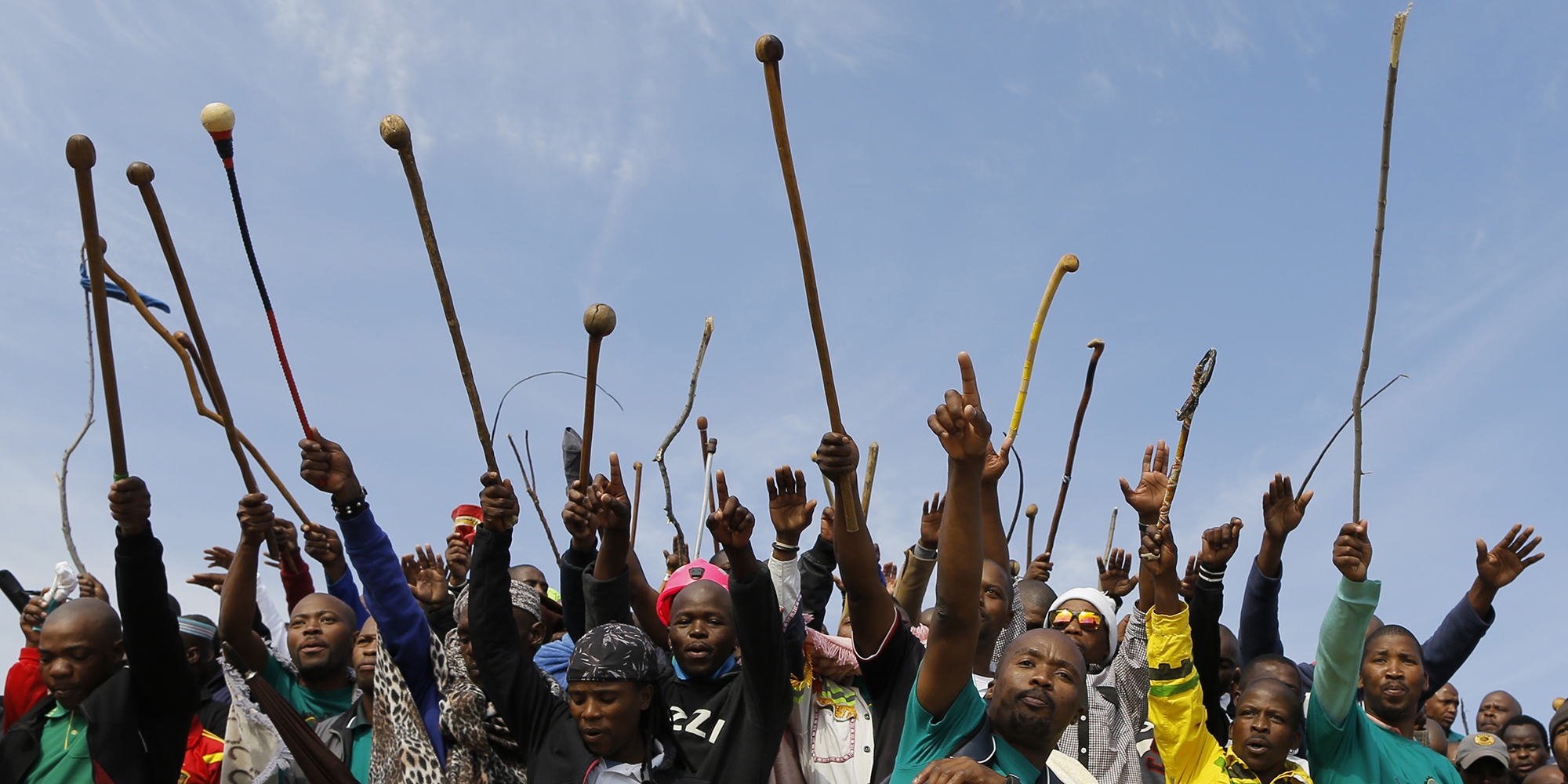
Members of the Association of Mineworkers and Construction Union (Amcu) dance and sing around Wonderkop Hill on the fourth anniversary of the Marikana massacre. (Photo: EPA / Kim Ludbrook)

Some of the thousands of striking miners from the Lonmin platinum mine march to the gates of the Karee Mine as part of their mass action in an attempt for higher wages, Marikana, South Africa, 5 September 2012. (Photo: EPA / Kim Ludbrook)
It is worth noting, too, that the Industrial Conciliation Act was passed in the aftermath of the Rand Revolt. Today’s Labour Relations Act is an updated version of that act, and I recall reading related documents that were literally copied and pasted. The Industrial Conciliation Act and its heir provide unions with legitimacy and opportunities for collective bargaining, but they also created shackles that divided Marikana workers from their union, NUM, in 2012 and, from some accounts, are dividing them from the new union Amcu 10 years later.
One wonders why we hear so little of the Rand Revolt at the time of its centenary. This is a counterfactual problem, and one can only speculate. Perhaps, Covid-19 blurred our vision of the past. Perhaps there is a lack of interest in South African history before apartheid and the liberation struggle.
Or, perhaps, the Rand Revolt is too controversial, too complicated, so better put to one side. It is certainly controversial. About 70 strikers and a similar number of government forces were killed, and about 30 Africans also lost their lives, killed by white workers. The strikers’ leaders tried to stop the racial massacre, but it provides a reminder of the brutality of many white workers in those days.
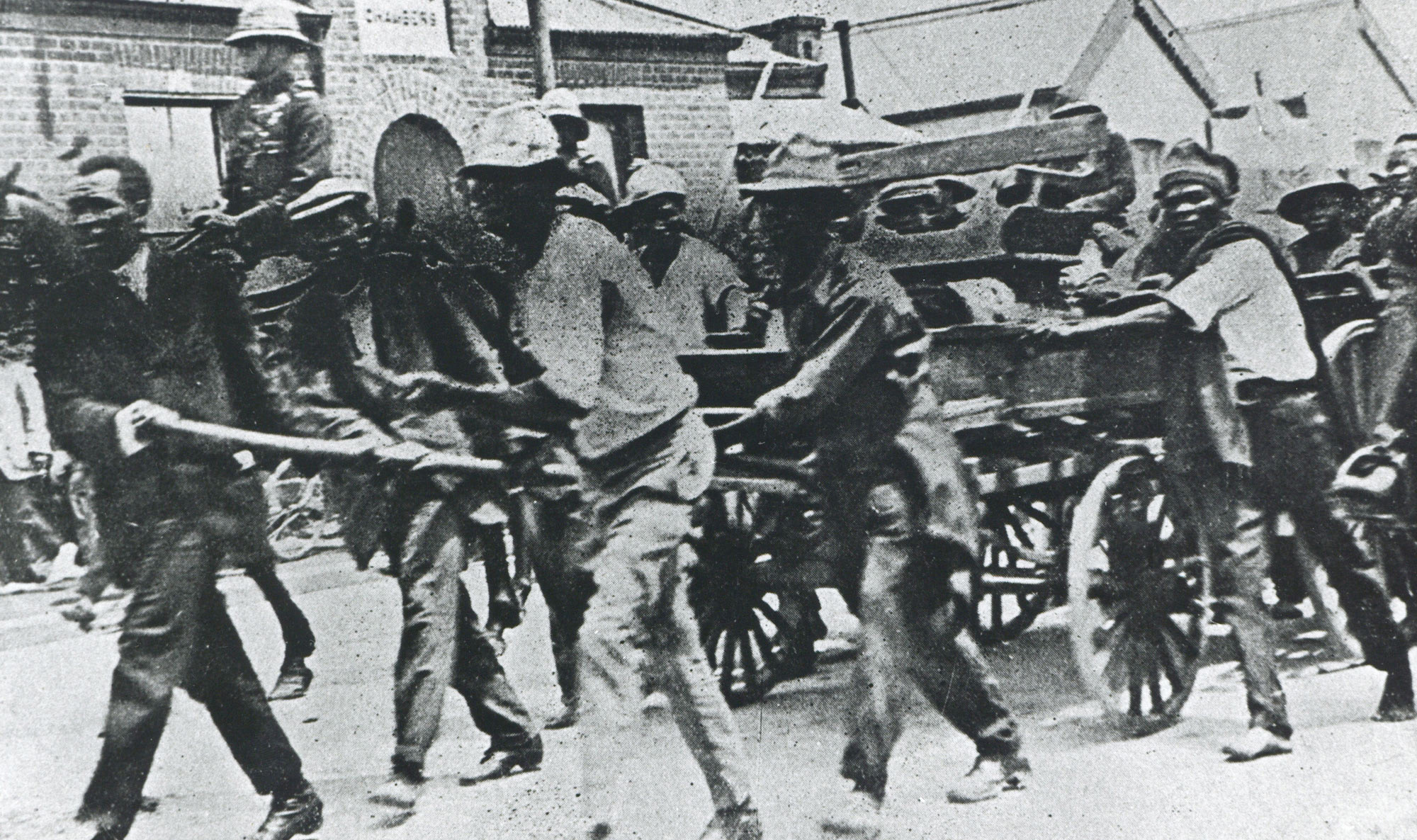
Circa 1922: African residents of the city cart away their dead, likely to have been murdered by Johannesburg’s white revolutionaries. (Photo: Historical Papers Research Archive, University of the Witwatersrand, South Africa)
As an aside, at the top of the koppie there are a couple of monuments. These are to soldiers who died in the South African War. At first, I was disappointed, wanting them to be a memorial to the Rand Revolt. On second thought, it occurred to me that whites are also rather good at killing other whites.
There is, though, another controversy. In 1922, the workers were beaten by an alliance, by the state — led by Jan Smuts — throwing its weight behind the owners of mining capital. In 2012, the workers were beaten by a similar alliance, by the state throwing its weight behind the owners of mining capital, an alliance cemented by the personality and politics of Cyril Ramaphosa.
The site of the Brixton Ridge battle may be hidden from the campus and suburbs below, and the Rand Revolt may be hidden from our history. But, let us never forget the carnage wrought by capital and the state in 1922, and repeated in 2012. The 44 workers killed at Marikana are a symbol of class struggle today. Our memory is our own memorial. They did not die in vain. DM
Kate Alexander is a professor of sociology at the University of Johannesburg.


















 Become an Insider
Become an Insider
Well that was most interesting and something about which I knew nothing at all. Thank you Kate Alexander for putting it up.